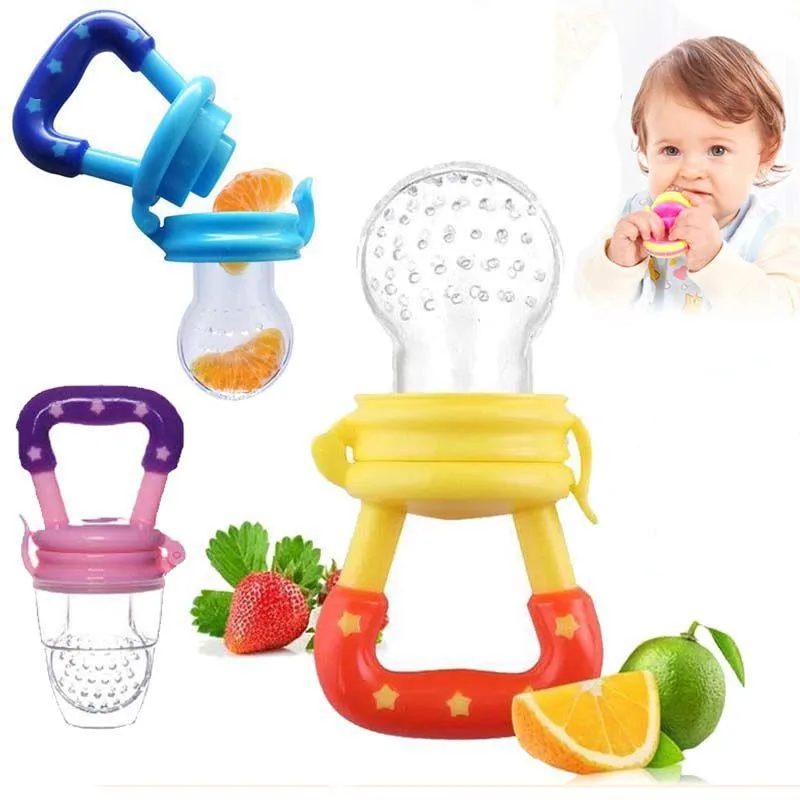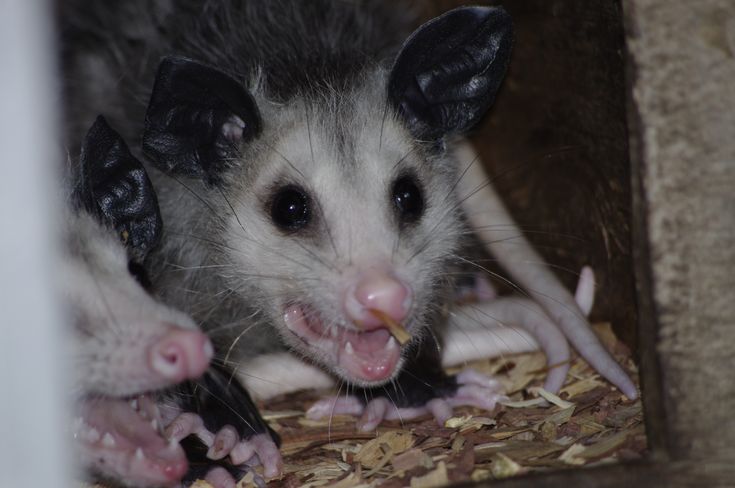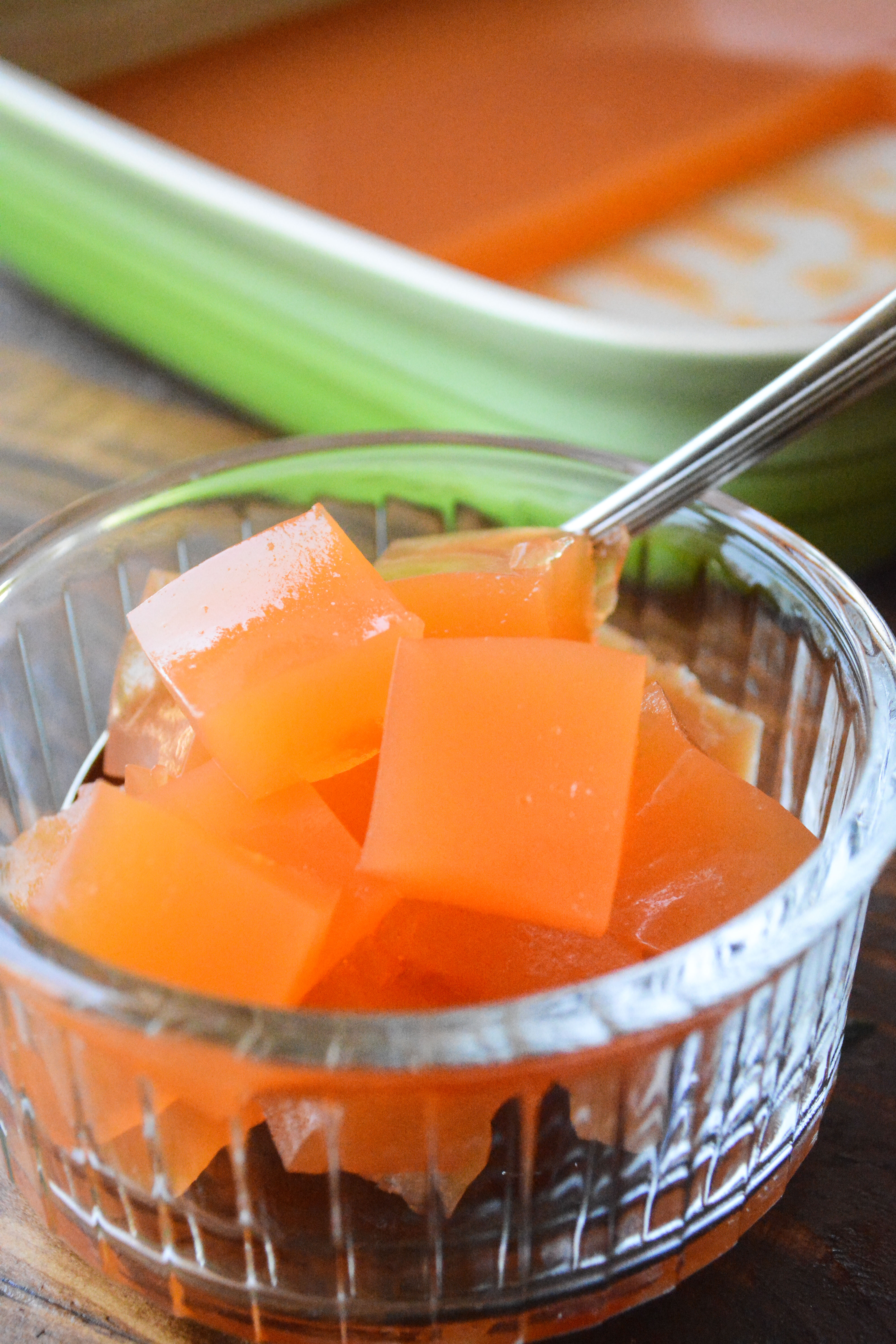Should i make my own baby food
Is it OK to make my own baby food?
Yes, you may find several benefits to feeding your baby homemade foods. It can be less expensive than store bought, for example. It can let your child enjoy baby-friendly versions of foods they see the rest of the family eating. And it may be easier than you think. All you need is a blender, food processor, or even a hand-held mixer.
Keep these tips in mind to ensure homemade food is nutritious and safe for your baby:
When is my child ready to try baby food?
The American Academy of Pediatrics recommends exclusive breastfeeding for about the first six months. Before your child starts solid foods, be sure they are developmentally ready. They should be able to sit in a highchair or feeding seat with good head control, for example, and should show interest in food, opening their mouth on their own. Your pediatrician can help guide you through getting started.
What's the best way to get started making my own baby food?
First, think about foods are already on your menu. There's probably no need to make a special item. After introducing individual foods, you may want to try combinations. Don't worry too much about ratios—there is no magic formula. And try not to overthink which solids and how much of each to give your baby. (Remember that breastmilk or infant formula still provides the vast majority of calories and nutrients for infants under age 1.)
Instead, consider balancing several types of foods to offer different nutrients. You may find that your baby only eats a few bites of something new, so plan to store leftovers for later. Some foods may need to be offered 8-10 times before an infant or toddler eats them well.
Balance, moderation & variety
The latest USDA Dietary Guidelines for Americans encourage parents to “make every bite count" by having every food in an infant's diet support nutrition and growth needs. Think of each bite as a chance for your child to explore the color, taste, and texture of a nutritious food.
When offering your baby new foods, try to include fruits and vegetables in each color of the rainbow.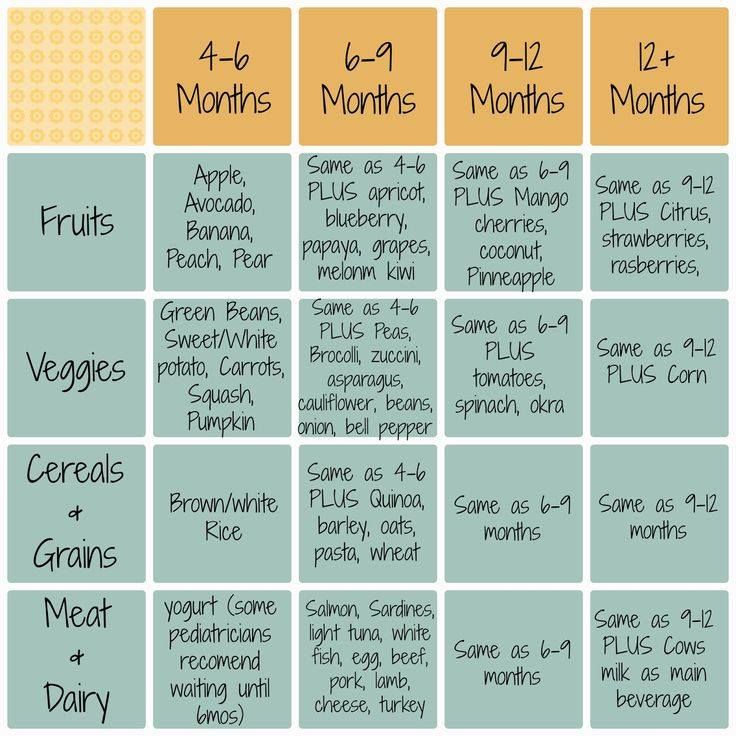 Also offer good sources of protein (such as beans, chicken, fish, and yogurt), fat, and iron (for example, iron-fortified oat cereal or meats). Serving a variety of foods also is key to helping lower the risk of toxic element exposure for your baby. (See Heavy Metals in Baby Food.)
Also offer good sources of protein (such as beans, chicken, fish, and yogurt), fat, and iron (for example, iron-fortified oat cereal or meats). Serving a variety of foods also is key to helping lower the risk of toxic element exposure for your baby. (See Heavy Metals in Baby Food.)
Get those allergen foods in!
Early exposure to common food allergy culprits, such as egg, soy, gluten, dairy, nuts and fish, can lower the risk of babies developing allergies to them. Try mixing a small amount of peanut butter with oatmeal cereal, for example, or offer bites of scrambled egg. You can also introduce yogurt or shredded cheese once your baby is eating solids, along with small bites of a well-cooked white fish like tilapia or cod. If your child has severe eczema or an egg allergy, be sure to discuss introduction of these foods with your pediatrician.
What should I avoid?
Do not feed infants under age 1 honey, since it can contain bacteria that could make them sick. Also beware of foods that may be a
choking hazard, such as nuts or raw carrots. You can offer your baby
water with meals, but it is best to avoid all other beverages except breastmilk or formula. Homemade foods should not replace breast milk or infant formula, and remember that you should
not make infant formula at home. (See
Is Homemade Baby Formula Safe?)
Also beware of foods that may be a
choking hazard, such as nuts or raw carrots. You can offer your baby
water with meals, but it is best to avoid all other beverages except breastmilk or formula. Homemade foods should not replace breast milk or infant formula, and remember that you should
not make infant formula at home. (See
Is Homemade Baby Formula Safe?)
Storing homemade baby food
Some parents like to prep in advance by cooking in batches and storing the pre-made baby food. This can make life easier during busy days. Consider freezing the leftovers to use another time. After cooking, an ice cube tray is a wonderful way to freeze leftover food. Each cube is about 1 oz of food, and you can transfer to a zipped plastic bag or other storage container after freezing. Be sure to label the type of food and the date. Plan to eat frozen baby food within 3 months by reheating on the stove or in the microwave.
What about baby-led weaning?
Some families choose to skip pureed foods and offer babies small bites of regular table foods, typically without utensils. This allows infants who reject purees or prefer texture to feed themselves, even choosing what and how much they eat.
This allows infants who reject purees or prefer texture to feed themselves, even choosing what and how much they eat.
It's a good idea to talk with your pediatrician before starting. Your child should show signs of general developmental readiness for solids, plus the ability to bring their hands to their mouth. Begin with small bites of soft or mashed foods first, such as baked sweet potato, scrambled egg, small pieces of banana or ripe mango, or green peas. Remember to avoid raw vegetables, nuts and seeds, popcorn, whole grapes, and other foods that may increase choking risk.
Remember
What's right for your family may not be the same as for your friends, so try to avoid comparisons. All families are different and strive to do their best. Making homemade baby food is a great option, but don't feel badly if you need to use store-bought food, as well. Family size, budget, and schedule all contribute to these decisions. Just remember to offer a variety of foods to your baby, and make every bite count!
More information
- Starting Solid Foods
- Choking Prevention
- Ask the Pediatrician: How should we feed our baby if we're running low on money?
-
Heavy Metals in Baby Food
Making Homemade Baby Food: Benefits, Disadvantages, and More
A step-by-step guide to making and storing food for your baby.
Written by Gina Shaw
When you begin feeding your baby solid foods, it’s time to think about what foods you’re going to be feeding them. There are many healthy premade options, including organic baby food. But homemade baby food is a popular option for parents who want to know exactly what goes into their baby’s mouth -- and making it may be easier than you think.
Homemade Baby Food: Advantages of Making It Yourself
Parents who prefer homemade baby food have many reasons for their choice.
- They know exactly what they’re feeding their baby.
- It’s more economical than buying pre-packaged foods (although some parents note that this is not always the case).
- They can choose their own fruits, vegetables, and other foods for purees, instead of relying on the flavors chosen by manufacturers. You’re not going to find melons or avocados in the baby food section of the supermarket.
- It gets the baby used to eating the same food as the rest of the family -- just in puree form.

Myra Bartalos, the mother of a 20-month-old daughter in Brooklyn, N.Y, found that making her own baby food was easy and appealed to her concern for her daughter’s nutrition.
“What sealed the deal for me was finding out that jarred food is cooked at extremely high temperatures to kill bacteria for longer storage, at the same time taking out many of the food's vitamins and nutrients and taste,” says Bartalos. “I would roast, steam, or boil veggies or fruit on the weekends and puree in a mini food processor. I'd make three or four different fruits and veggies at a time, so I had a month's worth of food with each cooking weekend.”
“Making your own baby food does help you think more about what you're feeding your child,” says Erika Radtke, the mother of a 4-year-old boy and newborn daughter in Carlsbad, Calif. “And it seems to pave the way for making healthier meals, even as he or she gets older.”
Making Baby Food: Disadvantages of the Homemade Approach
Some parents who’ve tried and given up on homemade baby food point out these disadvantages to making it:
- Time.
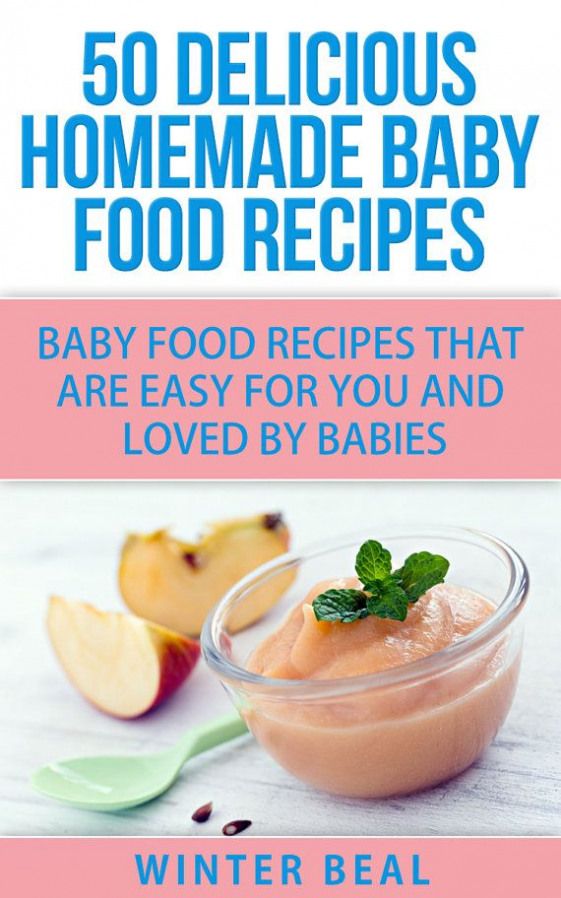 It takes time to make and prepare lots of little servings of homemade baby food. It’s much faster to pick up prepackaged servings.
It takes time to make and prepare lots of little servings of homemade baby food. It’s much faster to pick up prepackaged servings. - Convenience. Prepackaged baby foods come in measured amounts and ready to serve.
- Storage. Homemade baby foods may spoil more quickly and require refrigeration, which may take up room in your fridge or freezer if you make a lot of servings ahead of time. Prepackaged baby foods don’t need refrigerator storage until they’re opened.
Although Radtke made some of her son’s baby food, she admits, “It was a pain. I used to take a whole weekend to cook the foods, portion it out into ice cube trays, freeze them and store them. I didn't have a problem using Gerber's or Earth's Best when I ran out, though.”
If you’re daunted by the idea of making your own baby food, don’t feel that you’re neglecting your baby. “Foods intended for babies are so pure to begin with,” says Jennifer Shu, MD, a pediatrician in Atlanta and co-author of Heading Home with Your Newborn: From Birth to Reality and Food Fights: Winning the Nutritional Challenges of Parenthood Armed with Insight, Humor, and a Bottle of Ketchup.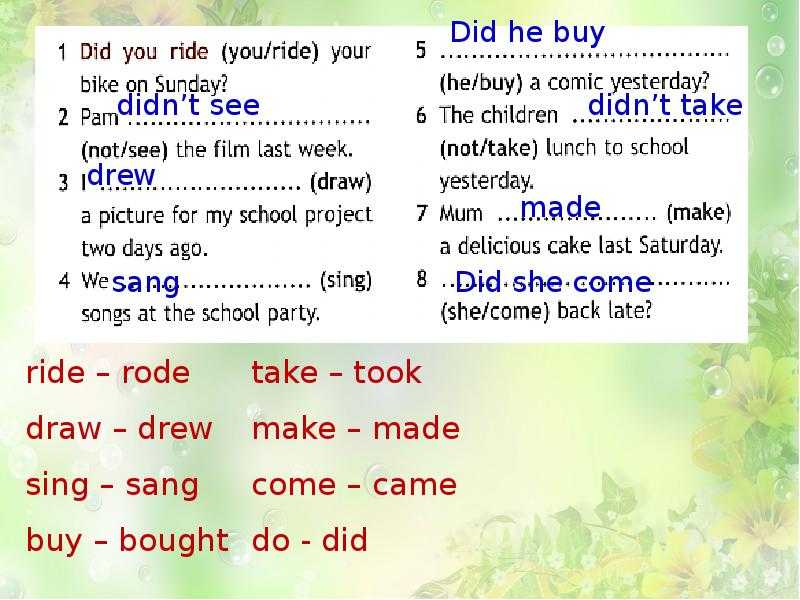
“If you’re really concerned about what your baby’s eating and don’t have the time to make your own baby food, focus your attention on what they’re eating once they begin table foods,” Shu tells WebMD. “It’s really a very short window of time when they are eating purees.”
Making Baby Food: What You’ll Need
If you decide to make your own baby food, says Shu, it’s not that difficult: “All you need is a food grinder and a way to steam the food.” (If you’re taking the time to make your own baby food, steaming is the best way to cook ingredients because it preserves the most nutrients.)
There are plenty of baby food makers on the market, from a French product that combines steaming, blending, warming, and defrosting, to simple baby food processors, mills, and grinders. But you don’t need to buy any of these products; your own food processor will work just as well for making baby food. And if you don’t have one, just use a potato masher or blender, to make sure the food is soft and does not have chunks.
Many popular books offer hundreds of recipes for baby food purees, including Blender Baby Food, Top 100 Baby Purees, and the Petit Appetit Cookbook. These books can help you come up with new ideas to try with your baby and remind you of important nutrients to include, but as with baby food makers, they’re not a requirement for making your own baby food.
Healthy Homemade: How to Make Baby Food in 6 Easy Steps
- Wash and rinse your hands and equipment.
- Scrub and peel fruits and vegetables.
- Bake, steam, roast, or microwave until tender (steaming and microwaving preserve the most nutrients).
- Puree in a food processor with a little liquid (water, breast milk, or formula), or mash if your baby can handle more texture.
- Store in the refrigerator or freezer, in airtight containers. (Packaged baby foods can be stored in the cupboard until they’re opened; because they’re fresh, homemade baby foods can’t.)
- Rewarm when it’s time to eat and allow to cool.

There are a number of storage containers sold specifically for refrigerating and freezing small serving-sized amounts of baby food; you can also just use an ice cube tray.
In addition to fruits and vegetables, you can puree foods such as cooked meats (fully cooked, with no pink, and remove fat, skin, and connective tissue), beans, and cooked eggs.
Homemade Made Easy: 1-Step Baby Food
When you’re preparing some foods, you can actually cut the steps down to one. “Cutting up a very ripe pear, mashing a banana, mashing an avocado -- that’s making your own baby food,” Shu tells WebMD. “Or, for example, when you make mashed potatoes for the family, set aside some that don’t have whole milk added. You can add a little butter or mild spices. As long as you’re eating healthy, you can give your baby a modified version of what you’re eating.”
Baby food at home: recipes, video
Growing up a little person is a delightful process that cannot but please the parents of the crumbs. However, the first feeling that mom and dad face when it comes time to introduce complementary foods into a child's diet is confusion.
However, the first feeling that mom and dad face when it comes time to introduce complementary foods into a child's diet is confusion.
Which food is the most healthy, hypoallergenic and delicious? Most often, the first "real" meal of the crumbs after mother's milk and formula is vegetable or fruit puree. The choice of baby food on store shelves is very wide - each manufacturer tries to convince the buyer that jars with beautiful labels contain only natural products, there are no dyes, sweeteners and other harmful additives. A variety of "meals" for babies in factory packaging marked "3+ months." does not guarantee the true usefulness of the product that is inside. Every mother understands that complementary foods prepared on her own, from natural products, are much better for her child.
Another advantage of making your own baby food is that you can choose the best ingredients, wash fruits, berries or vegetables thoroughly, peel them well and remove damaged parts. In addition, the parents of the crumbs themselves can choose the way - how best to cook baby food: food can not only be boiled, but also baked in the oven or cooked in a double boiler.
In addition, the parents of the crumbs themselves can choose the way - how best to cook baby food: food can not only be boiled, but also baked in the oven or cooked in a double boiler.
It is also important that home-made baby puree is much tastier, it will undoubtedly be useful for a growing body and will not cause allergies! Even the simplest children's dish, prepared by mom, keeps the warmth of caring hands and cannot be compared with expensive dishes from the store.
What should be the correct complementary foods for children? Of course, you should start with one ingredient (such purees are called one-component purees), then move on to more complex options. Experts emphasize that the most suitable product for the first "dish" is zucchini. Cauliflower can also be considered neutral. Gradually it will be possible to introduce carrots, pumpkins, potatoes, broccoli and green peas. At the first stage of the introduction of complementary foods, it is better to give preference to vegetable purees and switch to fruit purees when the child already treats “serious” food well.
The basic rules and principles of preparing high-quality baby food yourself:
- it is best to take fresh products for preparations: fruits from the tree, berries from the bush and vegetables from the garden are much healthier than those that have already been in the refrigerator for a week. If there are no seasonal vegetables at the time of preparation, the use of frozen foods is acceptable, but in this case, try to give preference to whole fruits - they retain the greatest amount of nutrients;
- only filtered water should be used for cooking vegetables;
- Preparing baby food requires, if not separate, then thoroughly washed dishes. Do not, for example, cut vegetables on a meat board. If there is a dog or cat in the house, then you need to restrict her access to the kitchen when food is being prepared;
- It is not recommended to use vegetables and fruits in the diet of infants, in which the content of chemical additives is consistently high.
 These often include watermelons and melons, beets, spinach and lettuce;
These often include watermelons and melons, beets, spinach and lettuce; - It is better to soak vegetables purchased on the market with water before cooking: put carrots, potatoes, zucchini and cauliflower in filtered water for a couple of hours - this will remove nitrates;
- do not leave excess mashed potatoes for the next meal: the child should be given only freshly prepared food, and "yesterday's" mashed potatoes are best eaten by adults or given to pets;
- you can choose cream, boiled egg yolk, grated cheese or finely chopped dill as an additive to puree - this will diversify dishes for children from 8 months;
- try it! Children's food can and should be enjoyed by an adult.
There is another question that often worries parents: is it permissible to preserve baby puree and how to do it correctly? After all, such complementary foods for the developing body of a small child must be prepared daily for one or even two or three years: until the baby is ready to eat adult food from the common table. Not every mother has the time and opportunity to prepare baby puree daily, but you don’t want to buy food for the baby in the store. In addition, it is obvious that in the winter-spring period it is almost impossible to find fruits and vegetables grown without the addition of chemicals. The answer to the question is quite simple: the requirements for the conditions for preparing baby food are very strict (keeping the temperature, sterilizing jars, etc.), but using an autoclave solves all problems: all that is required is to load jars with blanks into the autoclave for 20 minutes and set temperature 120 degrees. After cooling, it is better to store baby food in a dark, cool place for about 12 months, daily delighting the child with homemade homemade food.
Not every mother has the time and opportunity to prepare baby puree daily, but you don’t want to buy food for the baby in the store. In addition, it is obvious that in the winter-spring period it is almost impossible to find fruits and vegetables grown without the addition of chemicals. The answer to the question is quite simple: the requirements for the conditions for preparing baby food are very strict (keeping the temperature, sterilizing jars, etc.), but using an autoclave solves all problems: all that is required is to load jars with blanks into the autoclave for 20 minutes and set temperature 120 degrees. After cooling, it is better to store baby food in a dark, cool place for about 12 months, daily delighting the child with homemade homemade food.
Pumpkin puree: tender and fragrant
Pumpkin is a tasty vegetable that is good for babies. This fruit has a beneficial effect on digestion, is well absorbed by the child's body and is rich in various vitamins: A, C, B, B2, E, PP, T. In addition, the carotene content in pumpkin is 5 times higher than in carrots!
In addition, the carotene content in pumpkin is 5 times higher than in carrots!
Baby pumpkin puree has a sweet taste, so the kids eat this dish with great pleasure. For preparations, it is better to buy small whole pumpkins, as they usually taste better than large ones and are easier to peel.
- Rinse pumpkin well under running water, peel, cut in half, remove seeds.
- Then it is necessary to cut the fruit into small cubes, place in a saucepan and cover with water. Cooking time after boiling - 20 minutes. You can also steam pumpkin: it will retain more nutrients with the same cooking time.
- The next step is to beat the cooked pumpkin with a blender until the consistency of a gentle puree. If the dish turned out to be thick, add water or milk (milk mixture).
- Vegetable oil and salt are added to pumpkin puree to taste, but these additives should be used with caution: only if they are acceptable for the age of the child.
For babies older than 8 months, pumpkin puree is supplemented with other fruits and vegetables, and also added to porridge.
Broccoli puree: simplicity and elegance
Broccoli is not just cabbage, but a storehouse of vitamins and microelements! Beautiful on the outside and fantastic on the inside - the high content of protein and vitamin C (there is more in broccoli than in citrus!) deserves special attention. There are many articles on the Internet about the benefits of broccoli, and preparing this product is not at all difficult.
To prepare this type of cabbage for baby food, you need to choose the highest quality product: the inflorescences must be unopened, green, moderately elastic.
- Broccoli should be washed, cut into pieces and boiled. Steaming will take 20 minutes, in water - faster: fresh cabbage should be boiled for a little more than 5 minutes, and frozen - at least 10. When cooking, do not pour a lot of water, it should only cover the vegetables a little.
- When the cabbage is cooked, take it out, transfer it to a blender bowl and grind to a puree state, add a little warm boiled water.
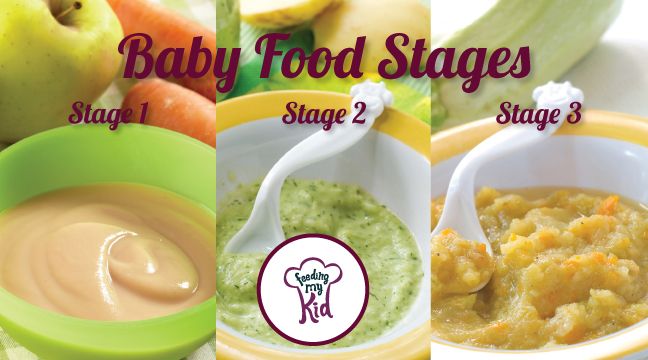
- Add salt and butter to taste.
Pear puree: a fragrant dessert
It's no secret that babies love fruit puree - almost all children like sweet dishes. The pear is a suitable option for the first one-component fruit food - a sweet fragrant fruit that has a high concentration of vitamins, stimulates digestion and almost never causes allergies.
If you want to cook a safe puree for your child at home, then it is best to choose green pears, these are the fruits that are considered to be the least allergenic.
- Fruit must be peeled, core removed with seeds, cut into cubes.
- Transfer the pear to a heavy-bottomed enamel saucepan, add a little water and simmer over low heat for 15-20 minutes.
- Then transfer to a blender bowl and puree until smooth. If the puree is too thick, add a little warm boiled water.
- You can dilute the dish with milk or formula - it depends on the taste preferences of the baby.
The same recipe is used for applesauce. In the future, try to combine these two fruits in one dish.
In the future, try to combine these two fruits in one dish.
Classic apple-zucchini puree
A good appetite of a baby pleases every mother, but little gourmets are often capricious, and it is not easy to please them. Zucchini and apple puree is a classic combination of products that will diversify the baby's menu already in the fifth or sixth month of life.
This complementary food contains only hypoallergenic products, has a positive effect on the functioning of the heart, and stimulates the strengthening of the immune system.
- Selected products should be thoroughly washed, peeled, core removed from apples.
- Cut zucchini and apples into cubes, put fruits in a cooking pot first - they should cook for 5 minutes longer, and then vegetables. The total cooking time is 20 minutes.
- When the food becomes soft, it is necessary to grind it to a puree state using a blender.
- To taste - dilute with water, add salt, oil.

This puree can be considered an independent dish for the little ones or become a delicious side dish for older kids.
Colorful carrot and potato puree
For many parents, carrots and potatoes are the easiest and most understandable type of complementary food for the baby. However, if you cook and serve standard products a little differently than usual, you can improve the traditional taste of a classic dish.
For baby puree, young potatoes should not be chosen - they contain a lot of starch. Carrots, on the contrary, it is better to buy young ones.
- Wash and peel the vegetables thoroughly and cut into cubes.
- It is better to steam the mashed potatoes and carrots, the vegetables should be boiled separately. Cook until tender, 20 minutes on average.
- Separately puree the vegetables in a blender, diluting with warm water if needed.
Both types of puree are beautifully placed on a plate without mixing: the child can decide for himself whether to mix food or eat separately.
Exotic variety: mango puree
Tropical fruits should not be offered to a small child before the age of 7-8 months and only if there was no allergy to other foods.
Mango is an aromatic fruit with an original pleasant taste. This fruit helps to overcome colds, reduce inflammation in the body, improve sleep and normalize the functioning of the stomach.
To feed the baby, ripened fruits should be selected - quite soft, yellow-red in color.
- Fruit should be peeled and pitted, cut into cubes.
- Put the raw mango into a blender, purée, transfer to a heavy-bottomed pot and boil for a few minutes.
Older children may be offered uncooked mango puree. This fruit is completely independent - no need to add sugar or water!
Sweet pumpkin puree with apple
This puree is called sweet, since both pumpkin and apples are foods with sufficient sugar content. Such a dish is well suited as a dessert for children who already eat “serious” food well - vegetable purees and cereals.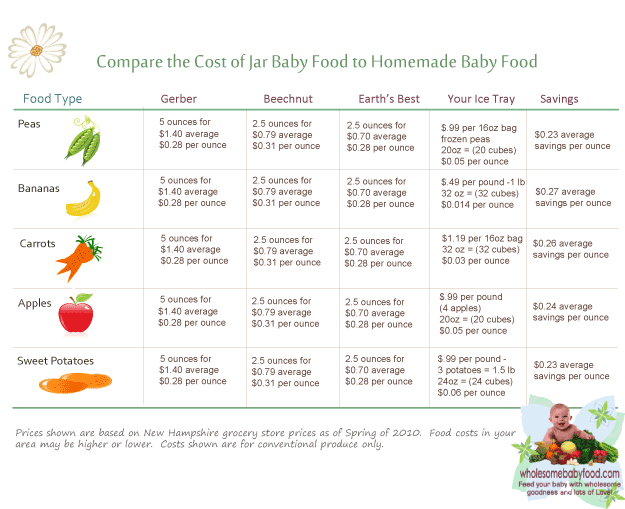
In addition, such complementary foods are a great option for the autumn-winter period: seasonal products contain enough choline, a lot of fiber, natural proteins and vitamins (groups A, B, C, E, etc.), zinc, sodium, calcium and only!
- Pumpkins and apples must be peeled, peeled and seeds removed, cut into cubes and sent to a double boiler.
- Cook for about 20 minutes until the food is soft. Then place them in a blender bowl, add raisins and chop. If the child chews well, mash everything with a fork, and leave the raisins whole.
Hearty puree with celery and turkey
For older kids, meat is added to vegetable dishes - turkey fillet is an excellent option for developing a child's taste preferences. Appetizing and fragrant meat puree includes only three ingredients: celery root, turkey fillet, butter.
The proportion of meat and celery should be approximately 10:1, the amount of butter to your taste.
- The turkey fillet must be boiled in the "second stock" for about 20 minutes after boiling.

- Wash, peel and cut the celery root into cubes and put into the boiling broth 10 minutes before it is done.
- After cooking, puree the turkey and celery with a blender, adding stock if necessary.
- Salt to taste and add oil. For one children's serving, 3-5 grams of butter is enough.
A child from early childhood will begin to get used to full-fledged homemade food without the addition of preservatives and harmful components, and will grow up healthy and strong. In summer and autumn, parents can make preparations: prepare potatoes, carrots, beets, pumpkins and apples for storage (these products are stored for a long time - they do not need to be frozen), freeze berries and seasonal fruits, or roll ready-made mashed potatoes into jars! Homemade baby food without unnecessary flavor enhancers and salt is the best complementary food, warmed by mom's love.
Homemade baby puree: recipes
Homemade fruit and vegetable puree: cooking secrets
Vegetable and fruit puree is often the first meal of the baby after breast milk or formula, so many mothers prefer to cook it on their own. Although modern manufacturers convince us that baby food is devoid of preservatives and harmful additives, fresh vegetables and fruits are much healthier, especially when it comes to infant nutrition. Yes, and cooking baby puree at home is not so difficult.
Although modern manufacturers convince us that baby food is devoid of preservatives and harmful additives, fresh vegetables and fruits are much healthier, especially when it comes to infant nutrition. Yes, and cooking baby puree at home is not so difficult.
Vegetables or fruits?
Let's try to make baby puree for our beloved baby. Despite the fact that pediatricians of the last century recommended starting complementary foods with fruits, it is better to first introduce the child to vegetables - modern doctors and nutritionists have come to this conclusion. Boiled vegetables do not irritate the gastrointestinal tract, are better absorbed, satisfy hunger, do not cause allergies and increased gas formation. In addition, vegetables do not contain fructose, which irritates the pancreas. And one more weighty argument in favor of the fact that it is better to start with vegetables - fruits are tastier, and if the baby tries them first, he will refuse vegetables, because they will seem to him more insipid.
How to prepare baby vegetable puree
What can baby puree be made from? The ideal puree for the first feeding is from cauliflower or zucchini. A little later, you can introduce pumpkin, broccoli, carrots, potatoes and green peas. Before cooking, vegetables are washed well, peeled, cut into pieces and cooked - steamed, in the oven or in the usual way, in water. The first two methods are preferable because oven roasting and steaming preserve the vitamins, minerals, nutrients, and natural color in the vegetables. And most importantly - such vegetables are much tastier. Some nutritionists recommend boiling vegetables with their skins on before peeling them, so choose your own cooking method.
If you do have to cook vegetables in a saucepan, use an enamel pot, add less water and dip the vegetables into boiling water. Boil until soft, but do not overcook vegetables and fruits, otherwise they will become tasteless and lose a lot of vitamins. Ready vegetables are chopped with a blender until smooth and slightly diluted with water, vegetable broth, breast milk or mixture to a gruel state, since the child does not yet know how to digest thick food. Small pieces of vegetables in puree sometimes cause the baby to refuse to eat, so the knives in the blender should be well sharpened, and if there is no technique, you can grind the vegetables through a sieve. Salt and spices are usually not added to baby vegetable puree, and if the baby is more than 6 months old, you can put a little butter in the puree.
Small pieces of vegetables in puree sometimes cause the baby to refuse to eat, so the knives in the blender should be well sharpened, and if there is no technique, you can grind the vegetables through a sieve. Salt and spices are usually not added to baby vegetable puree, and if the baby is more than 6 months old, you can put a little butter in the puree.
A few rules for making baby puree at home
- Use only fresh vegetables and fruits.
- Water for cooking vegetables must be filtered or bottled.
- If you are using frozen foods, choose only whole fruits and vegetables as they retain the most nutrients.
- All utensils for preparing baby food should be perfectly clean, so if the knife falls on the floor, it should be washed well. Also, the presence of pets in the kitchen during the cooking process is not allowed.
- Avoid vegetables and fruits high in nitrates, such as spinach, lettuce, beets, melons, and watermelons, in infants' diets.
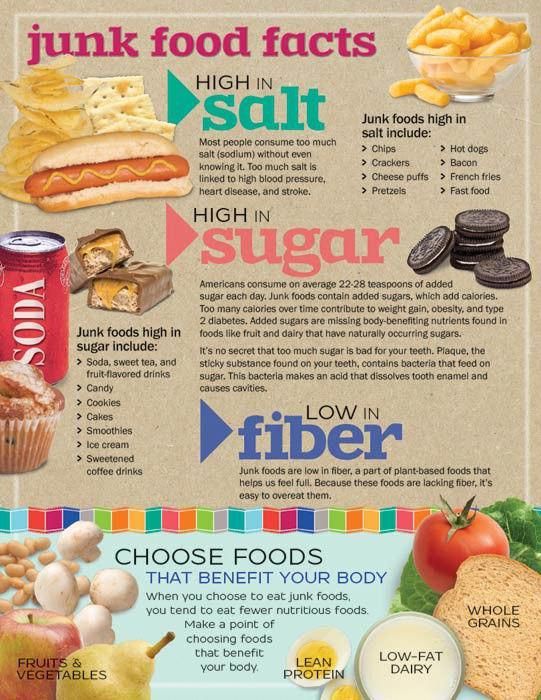
- Store-bought vegetables are recommended to be soaked in water to remove nitrates: 1-2 hours for this, up to 24 hours for potatoes.
- Mix sour-tasting fruits and berries with sweet fruits - for example, blackcurrant goes well with banana or pear. Sour puree is unlikely to please the baby.
- Give your child only fresh food, but yesterday's puree from the refrigerator is better to eat yourself.
DIY fruit puree for children
Children are more likely to eat fruit puree, as fruits are tastier and sweeter. Fruits contain a large amount of vitamins, minerals, trace elements, fiber and antioxidants, so they are very useful for a growing organism. However, fruits are strong allergens, especially berries, bananas, pomegranates and apricots, so they should be given with caution, watching the child's reaction. The most low-allergenic fruits are apples and pears, so it is better to start complementary foods with them, and then introduce all other fruits. First, the baby is fed with a one-component puree made from only one product, and then you can mix different vegetables and fruits, and not only among themselves. Very tasty combinations of fruits and vegetables, such as apples and zucchini, pumpkins and pears.
First, the baby is fed with a one-component puree made from only one product, and then you can mix different vegetables and fruits, and not only among themselves. Very tasty combinations of fruits and vegetables, such as apples and zucchini, pumpkins and pears.
Fruit must be of good quality, without damage, ripe and juicy, and the rules for preparing fruits do not differ from the rules for cooking vegetables. Naturally, fruit puree is not sweetened with honey and sugar - the later the child learns the taste of sugar, the stronger his health will be.
Aromatic pumpkin puree
Babies eat pumpkin with pleasure because of its pleasant sweetish taste, besides pumpkin is very healthy. It contains a whole storehouse of various vitamins, including vitamin T, which normalizes the metabolism in the body. For pumpkin puree, small pumpkins are suitable, since large fruits are not as tasty and difficult to peel.
Cut the pumpkin in half, and then into small pieces, one or two of which (depending on the appetite of the crumbs) cut into cubes. Boil the pumpkin in a double boiler or in water for 20 minutes, while warm, beat with a blender to a smooth puree and dilute if necessary with water or a mixture. Add oil and salt depending on the age of the child.
Boil the pumpkin in a double boiler or in water for 20 minutes, while warm, beat with a blender to a smooth puree and dilute if necessary with water or a mixture. Add oil and salt depending on the age of the child.
Gentle Broccoli Puree
One of my favorite homemade baby puree recipes is broccoli. This cabbage is extremely useful because it contains potassium, iron, calcium and other valuable substances. It has much more vitamin C than lemon, and the reason for its nutritional value is its high protein content.
Separate the broccoli into florets, wash thoroughly and steam for 20 minutes. Cabbage cooks faster in water - fresh broccoli will take 7 minutes, and frozen - about 15 minutes. Broccoli puree does not need much water, it should lightly coat the vegetables. After the cabbage becomes soft, chop it in a blender or pass through a sieve. If you're mashing for kids older than a year old, be sure to add butter - the little ones will gobble up broccoli on both cheeks!
How to make baby pear puree at home
Pear is a very delicate, tasty and healthy fruit that rarely causes intolerance. In addition to the high vitamin value, the pear has other beneficial properties - it facilitates digestion and removes toxins from the body.
In addition to the high vitamin value, the pear has other beneficial properties - it facilitates digestion and removes toxins from the body.
For baby food, choose green pears to reduce the risk of allergies, which are rare among babies. Peel the fruits from the peel and core with seeds, and then stew the pear in a bowl with a thick bottom in a small amount of water for 15 minutes. Let the pear cool slightly and puree it in a blender with a little of the remaining pear broth. For large kids, fruits can not be boiled, but add half a teaspoon of natural honey to the puree.
Zucchini and apple puree
Little gourmets will love this delicious puree, besides, zucchini is considered the most hypoallergenic vegetables, which, due to their high potassium content, have a beneficial effect on the heart. Apples contain iodine, iron and phosphorus, and due to the high concentration of vitamin C, apples help in the prevention of colds and viral infections.
Wash the zucchini and apples well, de-seed them, cut into pieces and cook in a pot for about 20 minutes, considering that the zucchini will cook 5 minutes faster. By the way, apples are steamed for 15 minutes, zucchini - 10 minutes. Next, vegetables and fruits are chopped in a blender, mixed and brought to a boil. For allergic children, this is the best side dish!
By the way, apples are steamed for 15 minutes, zucchini - 10 minutes. Next, vegetables and fruits are chopped in a blender, mixed and brought to a boil. For allergic children, this is the best side dish!
Exotic mango
Sometimes you can pamper your baby with exotic fruits - for example, make mango puree. This is a very delicate fruit with an original taste, containing 12 amino acids and improving sleep.
Choose only ripe fruits that are soft and red-yellow in color. Peel the mango from a thick skin and a large bone, put the pulp in a blender, add 2 tbsp. l. water and mash it, and then heat it in a saucepan for several minutes. For a baby up to a year old, it is better to give mashed potatoes with heat treatment to facilitate digestion, and older children can be fed raw mangoes.
Carrot-Potato Puree
Make normal potato puree without oil. Peel the carrots, grate them and stew them with butter and vegetable broth - about 1 tsp is required for 200 g of carrots. butter and 150 g of broth. When the carrot becomes very soft, wipe it through a sieve, and then put it on a plate, put mashed potatoes on the second half. Let the child choose whether to mix two types of puree for him or eat separately!
butter and 150 g of broth. When the carrot becomes very soft, wipe it through a sieve, and then put it on a plate, put mashed potatoes on the second half. Let the child choose whether to mix two types of puree for him or eat separately!
Pumpkin and apple puree
This sugar-free sweet pumpkin-apple puree made in a double boiler is suitable for children who are already accustomed to “adult” food and are able to accept a new unusual dish. It is better to take a pumpkin with a gray or green skin and with bright pulp - such fruits contain more vitamins and other useful substances. Apples are green because they have fewer allergens.
Cut pumpkin and apple flesh without peel and seeds into pieces, place in a double boiler and cook for 20 minutes. Grind pumpkin, apples and raisins in a blender or by hand with a pusher if the child has already learned to chew. They say that this puree is very good for skin and hair, and you can check the truth of this statement yourself if you start feeding this dish to your baby.






